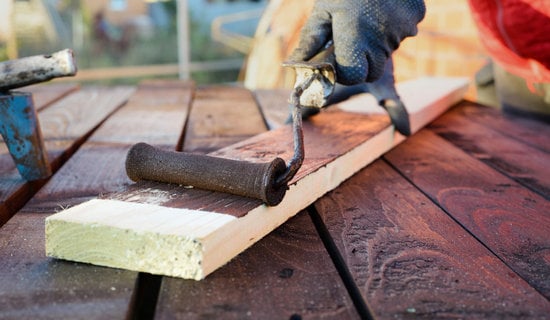Keeping records of home improvement projects is essential for homeowners who want to maintain and increase the value of their property. From insurance claims to future sales, having a detailed record of all improvements can make a significant difference in the long run.
In this article, we will explore the importance of keeping records of home improvement projects, why it matters, what types of records to keep, how to organize them, and how they can impact the resale value of a home.
Home improvement projects are more than just cosmetic upgrades or functional enhancements – they are an investment in your property. Keeping detailed records can help you prove the value of these investments if you ever need to file an insurance claim or sell your home in the future. Whether it’s for tax purposes, potential buyers, or simply for your own peace of mind, having a well-documented history of your home improvements is crucial.
In the following sections, we will delve into why keeping records matters for insurance purposes, future sales, and maintenance needs. We will also provide a comprehensive list of the different types of records to keep and offer tips for organizing them in a way that makes retrieval easy and efficient. Additionally, we’ll discuss the pros and cons of keeping records digitally versus physically and provide recommendations for the best methods for each.
Why Keeping Records Matters
Keeping records of home improvement projects is essential for several reasons. Firstly, having detailed records can be crucial for insurance purposes. In case of any damage to the property, the insurance company may require proof of the improvements made to ensure a fair settlement. Additionally, when it comes to future sales, maintaining thorough records can significantly speed up the process and increase the resale value of the property. Potential buyers often appreciate transparency and documented history of all home improvements.
Moreover, detailed records can also serve as a guide for maintenance purposes. By keeping track of when certain repairs or upgrades were made, homeowners can anticipate when maintenance may be required to keep their property in top condition. Furthermore, these records can help in identifying warranties of products used in home improvements and ensuring that they are utilized efficiently throughout their lifetime.
Lastly, keeping clear and organized home improvement records is an excellent way to protect one’s investment and eliminate any uncertainties regarding past work done on the property. As such, it is important for homeowners to understand the value of keeping these records properly updated and well-maintained.
| Reasons to Keep Records | Importance |
|---|---|
| Insurance Purposes | To ensure fair settlement in case of damage. |
| Future Sales | To speed up sales process and increase resale value. |
| Maintenance Purposes | To anticipate maintenance needs & track product warranties. |
Types of Records to Keep
Home improvement projects can be a significant investment for homeowners, and it is crucial to keep detailed records of these projects for various reasons. One of the most important types of records to keep are receipts. This includes all receipts for materials, labor, and any other related expenses. It’s also important to keep contracts from any contractors or service providers involved in the home improvement project, as these documents outline the scope of work, timelines, and costs.
In addition to receipts and contracts, homeowners should retain permits obtained for the home improvement projects. Permits provide proof that the work was done legally and up to code, which can be vital when it comes time to resell the property. Before and after photos are also essential records to keep as they visually document the progress and outcome of the home improvement project, providing evidence of the quality of work done.
Finally, warranties for any materials or products used in the home improvement project should be kept on file. These warranties may come in handy if there are any issues with the materials or products used in the future. Having a comprehensive list of these different types of records will not only provide peace of mind but also protect homeowners in case of unforeseen circumstances such as insurance claims or disputes with contractors.
Organizing Your Records
Keeping organized records of your home improvement projects is essential for future reference and peace of mind. Here are some tips and tricks for keeping your home improvement records organized and easily accessible:
- Use a dedicated folder or filing system: Keep all your receipts, contracts, permits, before and after photos, warranties, and any other relevant documents in a dedicated folder or filing system. This will make it easy to find what you need when you need it.
- Label everything clearly: Make sure to label each document with the type of project it pertains to and the date it was completed. Clear labels will help you quickly locate specific records in the future.
- Create a digital backup: In addition to physical records, consider creating a digital backup of all your home improvement documents. This will provide an extra layer of security in case anything happens to the physical copies.
It is also important to regularly update your records as new projects are completed or new documents are obtained. By staying organized and proactive with your record-keeping, you can save yourself time and hassle down the road.
Remember that having well-organized records can also benefit you in the event of an insurance claim or when preparing for future home sales. Keeping detailed records demonstrates that your home has been well-maintained and cared for, which can positively impact its resale value.
Overall, taking the time to keep your home improvement records organized now will set you up for success in the future. Whether you choose to keep physical or digital records (or both), the key is to find a system that works for you and stick to it consistently.
Digital vs Physical Records
Keeping records of home improvement projects is essential for homeowners, but the decision to keep them digitally or physically can be challenging. Both methods have their pros and cons, and it’s important to consider the best approach for your specific needs.
Digitally storing records offers the advantage of easy accessibility and searchability. Homeowners can quickly retrieve documents such as contracts, receipts, or before and after photos with just a few clicks. Digital records also take up less physical space, reducing clutter in the home. However, there is always a risk of digital files being lost due to technical issues or cyber threats, so it’s crucial to back up digital records regularly.
On the other hand, keeping physical records provides a tangible backup in case of technological failures or data breaches. Important documents such as contracts and warranties can be safely stored in a filing cabinet or safe box. Additionally, some people find that they are more comfortable and organized when dealing with paper documents. However, physical records are susceptible to damage from natural disasters such as fires or floods, so it’s important to keep them in a secure location.
How to Retrieve Records
Communication With Contractors
When trying to retrieve records of home improvement projects, the first step is to reach out to the contractors or service providers who were involved in the project. This can be done through a phone call, email, or even an in-person visit to their office.
It’s important to provide specific details about the project such as the date it was completed, the scope of work, and any relevant contract or reference numbers. By maintaining clear and respectful communication with the contractors, homeowners can increase their chances of obtaining the necessary records.
Requesting Government Documents
For home improvement projects that required permits or inspections from government offices, homeowners may need to request copies of these documents for their records. This can typically be done by contacting the local building department or permit office. Homeowners should be prepared to provide specific details about the project, such as the property address and a description of the work that was completed. In some cases, there may be a small fee for obtaining copies of government documents.
Utilizing Online Resources
In today’s digital age, many home improvement records can also be obtained through online resources. For example, companies that specialize in certain types of home improvements may have customer portals where homeowners can access invoices and other relevant documents. Additionally, digital copies of permits and inspection reports may be available through official government websites. Utilizing these online resources can make it easier for homeowners to retrieve and organize their home improvement records for future reference.
By following these steps and being persistent in their efforts, homeowners can successfully retrieve their home improvement records from contractors, service providers, and government offices. These records are essential for maintaining a comprehensive history of all changes made to a property and will prove invaluable if issues arise in the future or when selling the property.
Importance of Record-Keeping for Resale Value
Keeping accurate records of home improvement projects is not only beneficial for the homeowner’s personal use but can also have a positive impact on the resale value of the property. Potential buyers are often attracted to homes that have been well-maintained and updated, and having detailed records of these improvements can provide reassurance and peace of mind.
Building Trust With Potential Buyers
When a homeowner can provide potential buyers with comprehensive records of home improvements, it creates a sense of transparency and trust. Buyers are more likely to feel confident in the condition of the property knowing that all renovations, repairs, and upgrades have been documented. This can lead to a smoother sales process and may even result in a higher selling price for the home.
Demonstrating Value
By showcasing a detailed history of home improvements, homeowners can effectively demonstrate the value that has been added to the property over time. Whether it’s an upgraded kitchen, a new roof or modernized bathrooms, having records available for potential buyers to review can help them understand the investment that has been made in the home and be willing to pay a premium price as a result.
Peace of Mind for Buyers
Potential buyers often have concerns about hidden issues or undisclosed problems when considering purchasing a home. By providing thorough documentation of all home improvements, homeowners can alleviate these concerns and provide peace of mind to interested parties. This transparency can make buyers feel more comfortable with their decision, ultimately leading to a quicker sale.
Conclusion
In conclusion, it is clear that keeping records of home improvement projects is crucial for homeowners. Not only does it provide valuable documentation for insurance purposes and future sales, but it also helps in maintaining the home over time. By having a comprehensive list of records such as receipts, contracts, permits, before and after photos, and warranties, homeowners can ensure that they have all the necessary information at their fingertips when needed.
It is important for homeowners to take the time to organize their records in a way that is easily accessible for future reference. Whether it be digitally or physically, having a system in place will save time and effort in the long run. It’s also important to consider the impact on resale value – potential buyers are often attracted to homes with well-documented improvements as it provides them with a sense of security and transparency.
Therefore, it is strongly encouraged for homeowners to start organizing their records now for future peace of mind. By doing so, they will be better prepared for any unforeseen circumstances and will also be able to showcase the value of their home should they choose to sell in the future. Ultimately, record-keeping for home improvements is an investment that pays off in terms of both practicality and financial benefit.
Frequently Asked Questions
How Do I Prove Home Improvements Without Receipts?
Proving home improvements without receipts can be challenging, but it’s not impossible. One way to do this is by keeping detailed records of the work done, including before and after photos, invoices, contracts, and any other documentation that supports the improvements.
You can also try to obtain affidavits or statements from contractors or professionals who performed the work as further evidence.
How Do I Keep Track of Home Improvements?
Keeping track of home improvements is essential for various reasons, such as proving the value of your property, maintaining a record for potential resale, or making insurance claims for damages. It’s advisable to create a file for each improvement project containing receipts, contracts, permits, before-and-after photos, and any other relevant documentation.
Utilizing digital tools or apps for organizing this information can also help with tracking home improvements effectively.
Can I Claim Home Improvements on My Taxes?
In some cases, you may be able to claim home improvements on your taxes if they qualify as eligible expenses according to the Internal Revenue Service (IRS) guidelines. Generally speaking, improvements that increase the value of your home might potentially qualify for certain tax benefits.
However, it’s crucial to consult with a tax professional or accountant to determine what types of home improvements are eligible for tax deductions or credits based on your specific situation and local laws.

I’m thrilled to have you here as a part of the Remodeling Top community. This is where my journey as an architect and remodeling enthusiast intersects with your passion for transforming houses into dream homes.





